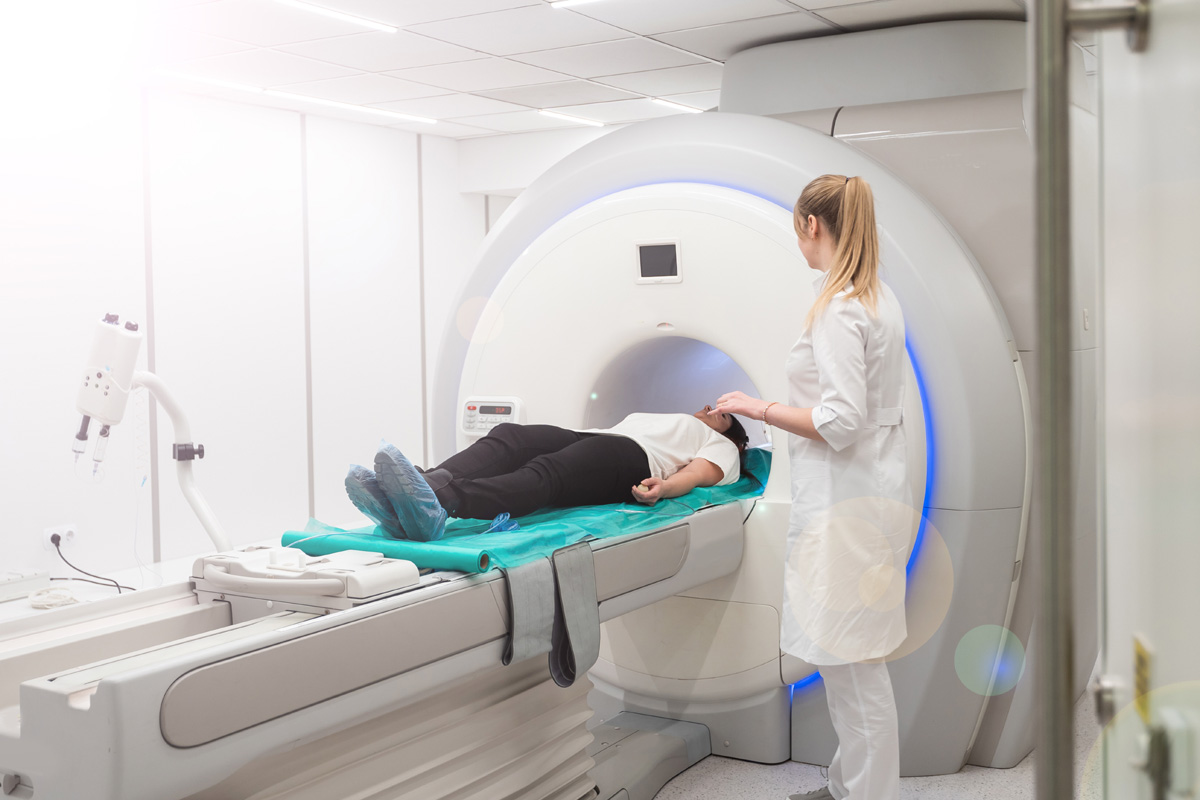Spondylolisthesis, a condition prevalent in the realm of spinal disorders, is characterized by one vertebral body slipping forward over the one beneath it. While some individuals may not display apparent symptoms, others may experience significant discomfort, including back pain and numbness. The causes of this condition are multifaceted, ranging from congenital issues to spinal degeneration. As we delve deeper into this topic, we will be illuminating the intricacies of spondylolisthesis, providing a nuanced understanding of its symptoms and causes, thereby offering a platform for comprehensive dialogue on this critical healthcare issue.
Understanding Spondylolisthesis
Spondylolisthesis, a complex medical condition, refers to the forward slippage of a vertebra, typically in the lower back, over the vertebra beneath it. This misalignment can lead to a variety of symptoms, including chronic back pain, stiffness, and difficulty moving. However, not all cases will present symptoms, making early detection and preventative measures essential.
Prevention of Spondylolisthesis is based on maintaining good spinal health. Regular exercise, proper lifting techniques, and maintaining a healthy weight can all contribute to the stability of the spine and mitigate the risk of vertebrae slippage. Despite these measures, some individuals, due to genetics or injury, may still develop this condition.
The emotional impact of Spondylolisthesis should not be underestimated. Living with chronic pain and mobility issues can lead to feelings of frustration and anxiety, impacting an individual’s quality of life. Mental health support, in conjunction with physical treatment, can be invaluable in managing these emotional effects.
Understanding Spondylolisthesis, its prevention, and the potential emotional impact, is the first step towards effective management and treatment of this complex medical condition.
How The Spine Works
To fully comprehend the intricacies of Spondylolisthesis, it is first essential to understand the fundamental workings of the spine, which plays a pivotal role in this condition. The spine is a complex structure, designed to protect the spinal cord while providing mobility and support to the body.
The spine anatomy comprises numerous interconnecting bones, discs, nerves, ligaments, and muscles. These components work together to facilitate movement, provide body support, and protect the spinal cord. Here are a few key elements to consider:
- The Vertebrae: These are the bones that make up the spine, stacked on top of each other. Each vertebra has a hole in the center to create a canal for the spinal cord.
- The Intervertebral Discs: These act as shock absorbers between each vertebra, allowing the spine to move and flex without causing damage.
- The Spinal Cord and Nerves: The spinal cord extends from the brain and travels down the center of the vertebrae. It sends nerve signals to and from the brain to the rest of the body.
Understanding the vertebral function and spine anatomy is crucial in grasping the complexities of Spondylolisthesis. It provides a baseline for identifying the conditions that can cause this disorder.
Spondylolisthesis Classification
In order to comprehend the varied nature of Spondylolisthesis, it is important to understand its classification, which is primarily based on the cause and location of the slippage. The most common classification system is the Meyerding system, which categorizes the condition into five grades based on the severity of the vertebral displacement.
Grade I is a slippage of less than 25%, and it is the least severe form, often treated with therapeutic exercises. Grade II involves a slippage of 25% to 50%. Surgical interventions may be considered for Grades III to V, where the slippage ranges from 50% to 100%.
Spondylolisthesis is also classified by the cause of the slippage. Dysplastic Spondylolisthesis is congenital and caused by abnormal bone formation. Isthmic Spondylolisthesis results from a small stress fracture. Degenerative Spondylolisthesis is the most common type and occurs due to aging and general wear and tear on the spine. Traumatic Spondylolisthesis is caused by injury or trauma to the spine, while Pathologic Spondylolisthesis is due to bone disease. Understanding these classifications can guide appropriate therapeutic and surgical interventions.
Recognizing Symptoms of Spondylolisthesis
In understanding spondylolisthesis, it is essential to recognize the key symptoms associated with this condition. As symptoms can vary in severity, it is important to be aware of both common and acute manifestations. The forthcoming discussion will focus on these symptoms, providing a comprehensive guide to their identification and understanding.
Identifying Common Symptoms
A significant number of individuals suffering from spondylolisthesis experience distinct symptoms that can aid in effective diagnosis of this spinal condition. Emotional impact and psychological effects often accompany the physical discomfort of this ailment, creating a complex health issue that requires comprehensive understanding and treatment.
The most commonly reported symptoms include:
- Lower back pain, often radiating down to the legs
- Stiffness in the back or legs
- Difficulty walking and standing for extended periods
These symptoms can drastically impact an individual’s quality of life, leading to emotional distress and psychological difficulties. It’s crucial to recognize these symptoms early, as timely diagnosis can pave the way for effective treatment strategies, thereby mitigating the overall impact of spondylolisthesis on the affected person’s life.
Severity of Symptoms
Recognizing the severity of symptoms associated with spondylolisthesis is paramount to implementing an effective treatment plan, as these symptoms often vary in intensity, from mild discomfort to debilitating pain. The psychological impacts of dealing with such pain can be substantial, potentially leading to anxiety, depression, and other mental health issues. Support systems, including medical professionals, psychotherapists, and loved ones, play a critical role in managing these impacts, providing emotional, physical, and psychological assistance. In severe cases, symptoms may interfere with daily activities, necessitating more aggressive interventions. The implementation of a comprehensive and personalized treatment plan is essential, as it not only addresses the physical symptoms but also considers the patient’s overall well-being.

Common Physical Signs
In the realm of spondylolisthesis, physical signs often serve as key indicators of the condition. The subsequent discussion shall elucidate these common physical manifestations, tying them back to their root causes and symptoms. A comprehensive understanding of these physical indications will assist in the early detection and appropriate management of spondylolisthesis.
Identifying Spondylolisthesis Symptoms
Common physical signs of spondylolisthesis can manifest in several ways, providing key indications for this spinal condition. These symptoms can greatly affect an individual’s daily life and may necessitate surgical interventions if not addressed promptly.
- Pain and stiffness in the lower back or buttocks, often exacerbated by physical activity or prolonged periods of standing or sitting.
- Numbness, weakness, or tingling in one or both legs, indicative of nerve compression.
- Difficulty in walking or maintaining balance, often leading to a change in gait.
The emotional impact of these symptoms can be significant, affecting aspects such as mood, productivity, and general quality of life. Timely identification and treatment of these symptoms are crucial to managing spondylolisthesis effectively and preventing further complications.
Causes of Spondylolisthesis
While the symptoms of spondylolisthesis are key to identifying the condition, understanding its root causes can provide significant insight into its manifestation and the common physical signs associated with it. Spondylolisthesis can occur as a result of various factors such as congenital issues, traumatic injuries, or degenerative conditions. It can also be a complication from surgical interventions, particularly those involving the spine. Although surgical procedures aim to correct spinal problems, improper healing or complications can lead to the slippage of vertebrae. On the other hand, non-surgical treatments for other conditions may unintentionally contribute to the development of spondylolisthesis. For instance, aggressive physical therapy can sometimes lead to excessive strain on the spine, increasing the risk of this condition.
Understanding Physical Indications
Recognizing the physical indications of spondylolisthesis is crucial for early diagnosis and timely intervention. Often, these signs can be subtly manifested, making them easy to overlook. However, a careful understanding of these symptoms can aid in recognizing the condition early.
- Exercise implications: A person with spondylolisthesis may experience difficulty in performing certain exercises, particularly those that involve spine flexion or extension. They may also have reduced flexibility and strength.
- Posture correlation: The individual may exhibit an abnormal posture, such as a forward lean or hunched back. This is due to the misalignment of the vertebrae, which affects the overall spinal alignment.
- Pain and discomfort: This is usually localized to the lower back, but can also extend to the buttocks and legs, intensifying with physical activity.
Pain Patterns in Spondylolisthesis
In patients suffering from spondylolisthesis, the pain patterns can significantly vary, often manifesting as lower back discomfort or radiating leg pain. The severity and frequency of these symptoms can also differ, with some patients experiencing persistent, debilitating pain, while others report intermittent episodes of discomfort.
The pain associated with spondylolisthesis often exacerbates with physical activity or prolonged periods of standing or sitting, leading to a decrease in the patient’s quality of life. Therefore, it becomes crucial to manage these pain patterns effectively. This can be achieved through a combination of Spondylolisthesis Exercises and, in more severe cases, Surgical Interventions.
Spondylolisthesis exercises aim to strengthen the core and back muscles, improving posture and providing better support for the spine. These exercises not only help alleviate pain but also increase flexibility and mobility, enhancing overall functioning.
On the other hand, Surgical Interventions might be considered for patients who fail to respond to conservative treatments or in situations where the condition is severe. These procedures aim to realign the vertebrae, relieve pressure on the nerves, and ultimately, manage the pain.
Understanding these pain patterns in spondylolisthesis is the first step towards targeted and effective treatment, thereby improving the prognosis and enhancing the patient’s quality of life.
Potential Causes of Spondylolisthesis
Before we can effectively manage the pain associated with spondylolisthesis, it’s crucial to explore the potential causes of this condition. Spondylolisthesis is typically a result of the wear and tear in the spine that comes with aging. However, certain factors, such as genetics, can also play a significant role in the development of this condition.
- Degenerative changes: As we age, the discs and joints of our spine can wear down, leading to spondylolisthesis. This is particularly true in the lumbar region, which bears the weight of the body.
- Trauma or injury: Sudden, forceful impacts, such as those experienced in a car accident or sports-related injury, can cause fractures in the vertebrae leading to spondylolisthesis.
- Surgical interventions: Some surgical procedures for the spine, specifically those focusing on the lumbar region, can inadvertently lead to this condition.
Alternative therapies can sometimes help prevent further slippage of the vertebrae, but it’s important to note that they are not a cure. Understanding the potential causes of spondylolisthesis is an essential step towards developing effective management strategies and treatments for this condition.
Risk Factors for Development
The susceptibility to developing spondylolisthesis is influenced by several risk factors. These include inherent genetic predispositions, lifestyle choices, and occupational hazards. Each of these aspects will be considered in depth to further our understanding of this complex condition.
Underlying Genetic Factors
Genetic predisposition plays a significant role in the development of Spondylolisthesis, with certain inherited traits increasing the susceptibility to this condition. The hereditary influence can be attributed to specific genetic variations that may weaken the spinal structure or affect the body’s calcium metabolism, which is crucial for bone health.
- Genetic polymorphisms such as those affecting collagen production can predispose an individual to spinal instability, thereby increasing the risk of Spondylolisthesis.
- Certain inherited metabolic disorders may interfere with the body’s ability to utilize calcium, leading to weaker bones that are more prone to slipping.
- Specific inherited traits, such as hypermobility or lax ligaments, can also contribute to spinal instability and the development of this condition.
Understanding the genetic factors can help in early identification and effective management of Spondylolisthesis.
Lifestyle and Occupation
Often overlooked, lifestyle choices and occupational hazards can significantly contribute to the development of Spondylolisthesis, making them critical risk factors to consider. Workplace ergonomics play a pivotal role; occupations that place high stress on the spine such as heavy lifting and prolonged periods of standing can instigate this condition. Additionally, sedentary behavior, a common characteristic of modern lifestyles, can exacerbate the risk. Extended periods of inactivity may lead to muscle weakness and imbalances, placing undue stress on the spinal column. Consequently, adopting an active lifestyle and adhering to ergonomically sound practices at work can mitigate the development of Spondylolisthesis. It is essential to recognize and address these factors to prevent or manage this debilitating condition effectively.

Diagnosis Techniques for Spondylolisthesis
In the realm of medical diagnostics, several sophisticated techniques are employed to accurately identify the condition of spondylolisthesis. These methods are designed to not only ascertain the presence of the condition but also to gauge its severity and determine the most effective course of treatment, be it therapeutic exercises or surgical intervention.
Three primary diagnostic techniques are commonly used:
- Physical Examination: This involves a thorough assessment of the patient’s medical history, symptoms, and a physical examination of the spine. The healthcare provider may check for tenderness, range of motion, and the presence of any neurological symptoms such as numbness or weakness.
- Neurological Evaluation: This includes tests to measure the patient’s reflexes, muscle strength, walking ability, and sensory perception. These tests can help determine if the spondylolisthesis is affecting the nerves.
- Diagnostic Imaging: Although detailed discussion on this will be made in the next subtopic, it’s worth mentioning that X-rays, CT scans, and MRI are important tools for visualizing the severity and location of the slippage.
These techniques form the basis of diagnosing spondylolisthesis, and their results are crucial in deciding whether therapeutic exercises can rectify the issue, or if surgical intervention is necessary.
Medical Imaging in Spondylolisthesis
Having mentioned the importance of diagnostic imaging in the previous discussion, we will now elaborate on its pivotal role in identifying and assessing spondylolisthesis. Accurate diagnosis of spondylolisthesis is substantively reliant on medical imaging, which allows for an in-depth examination of the spine’s structure.
Through imaging advancements, the ability to identify spondylolisthesis and assess its severity has significantly improved. Techniques such as X-rays, CT scans, and MRI scans provide a comprehensive view of the vertebral alignment, intervertebral disc health, and potential impingement on neural elements. Notably, the recent advancements in imaging technology have enabled the detection of minor shifts in the vertebrae that were previously difficult to identify.
Radiographic interpretation plays a critical role in the diagnostic process. The radiologist assesses the images for the presence of vertebral slippage and measures its degree, which is essential for determining the grade of spondylolisthesis. The interpretation also involves evaluating the images for additional spine abnormalities that might complicate the condition or affect its management.
Addressing Spondylolisthesis: Treatment Options
Once a diagnosis of spondylolisthesis is confirmed, a variety of treatment options can be considered, depending on the severity and specific characteristics of the condition. The aim is to alleviate pain, stabilize the spine, and improve functionality.
Surgical interventions may be recommended when non-surgical treatments have failed, or if the condition is severe or worsening. These may include decompression surgery to remove a portion of the bone or disc causing nerve compression, or spinal fusion surgery to permanently join two or more vertebrae together.
Alternative therapies, such as chiropractic care, acupuncture, or physical therapy, can also form part of the treatment plan. These therapies aim to improve strength, flexibility, and posture, which can alleviate symptoms and reduce the risk of future problems.
To create a mental picture, consider these scenarios:
- Undergoing decompression surgery, where the surgeon removes a part of your bone to relieve pressure on your nerves.
- Experiencing acupuncture, with tiny needles precisely placed to help manage your pain.
- Participating in a physical therapy session, working with a therapist on exercises to increase your stability and strength.
Each option must be thoroughly discussed with your healthcare provider to determine the most appropriate course of action.
Lifestyle Changes for Management
Beyond medical treatments and therapies, managing spondylolisthesis effectively often necessitates certain lifestyle modifications. Two key aspects of these changes involve dietary adjustments and posture correction, both of which can significantly contribute to alleviating symptoms and improving the overall quality of life.
Dietary adjustments play a crucial role in the management of spondylolisthesis. A balanced diet rich in calcium and vitamin D promotes bone health, aiding in the prevention of further spinal damage. Moreover, maintaining an optimal weight reduces additional strain on the spine, hence lessening pain and enhancing mobility. It is advisable to consult with a registered dietitian to ensure the dietary plan aligns with individual health needs and lifestyle.
Posture correction is equally important. Poor posture can exacerbate the condition by putting extra pressure on the spine. Various techniques, such as practicing yoga and pilates, can help improve posture. Additionally, ergonomic furniture and aids can provide necessary support for maintaining proper alignment. Regular consultations with a physical therapist can guide individuals through safe and effective exercises for posture correction. These balanced lifestyle modifications, combined with prescribed treatments, can significantly improve the management of spondylolisthesis.
Frequently Asked Questions
What Is the Average Recovery Time for Someone With Spondylolisthesis After Treatment?
The average recovery time post-treatment for spondylolisthesis varies per individual, typically ranging from a few weeks to several months. This timeframe is subject to treatment options utilized and effectiveness of pain management strategies.
Are There Any Specific Exercises Recommended for People With Spondylolisthesis to Strengthen Their Spine?
Yes, specific exercises can help strengthen the spine in spondylolisthesis patients. However, exercise precautions are crucial to avoid exacerbating the condition. A physiotherapist can provide a tailored regimen for pain management and spine strengthening.
How Does Spondylolisthesis Affect Pregnancy and Childbirth, if at All?
Spondylolisthesis can complicate pregnancy and childbirth by exacerbating back pain and postural issues. Proper pregnancy management with tailored exercises and pain relief techniques can help mitigate these challenges and ensure a safer delivery process.
Are There Any Support Groups or Resources Available for People Living With Spondylolisthesis?
Yes, numerous resources and support groups exist to aid those managing spondylolisthesis. They provide help with living adjustments and coping with the emotional impact, such as the Spine-health Forum and the Spondylolisthesis Support Group on Facebook.
Can Spondylolisthesis Get Worse Over Time if Left Untreated, and What Are the Potential Complications?
Yes, untreated spondylolisthesis can worsen, potentially leading to increased pain, nerve damage, or loss of function. Pain management strategies and surgical intervention options are crucial to mitigate these complications and improve patient’s quality of life.

